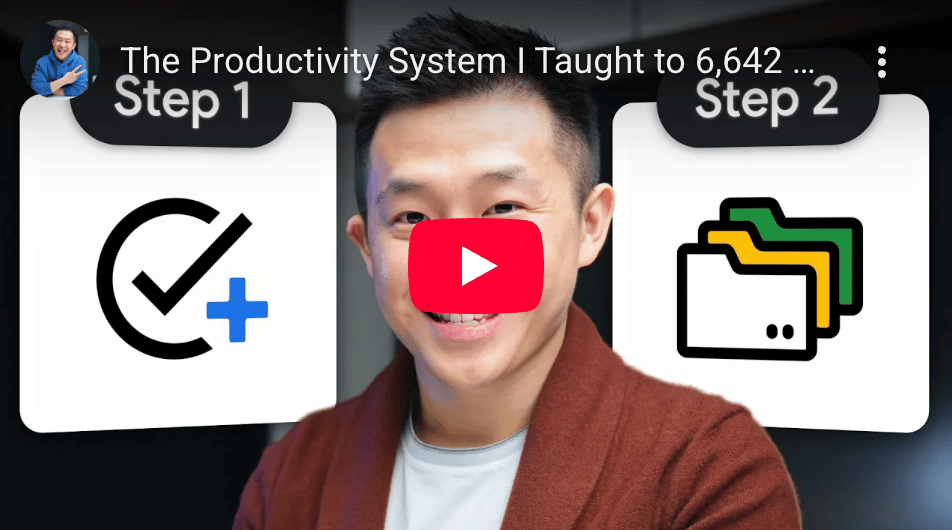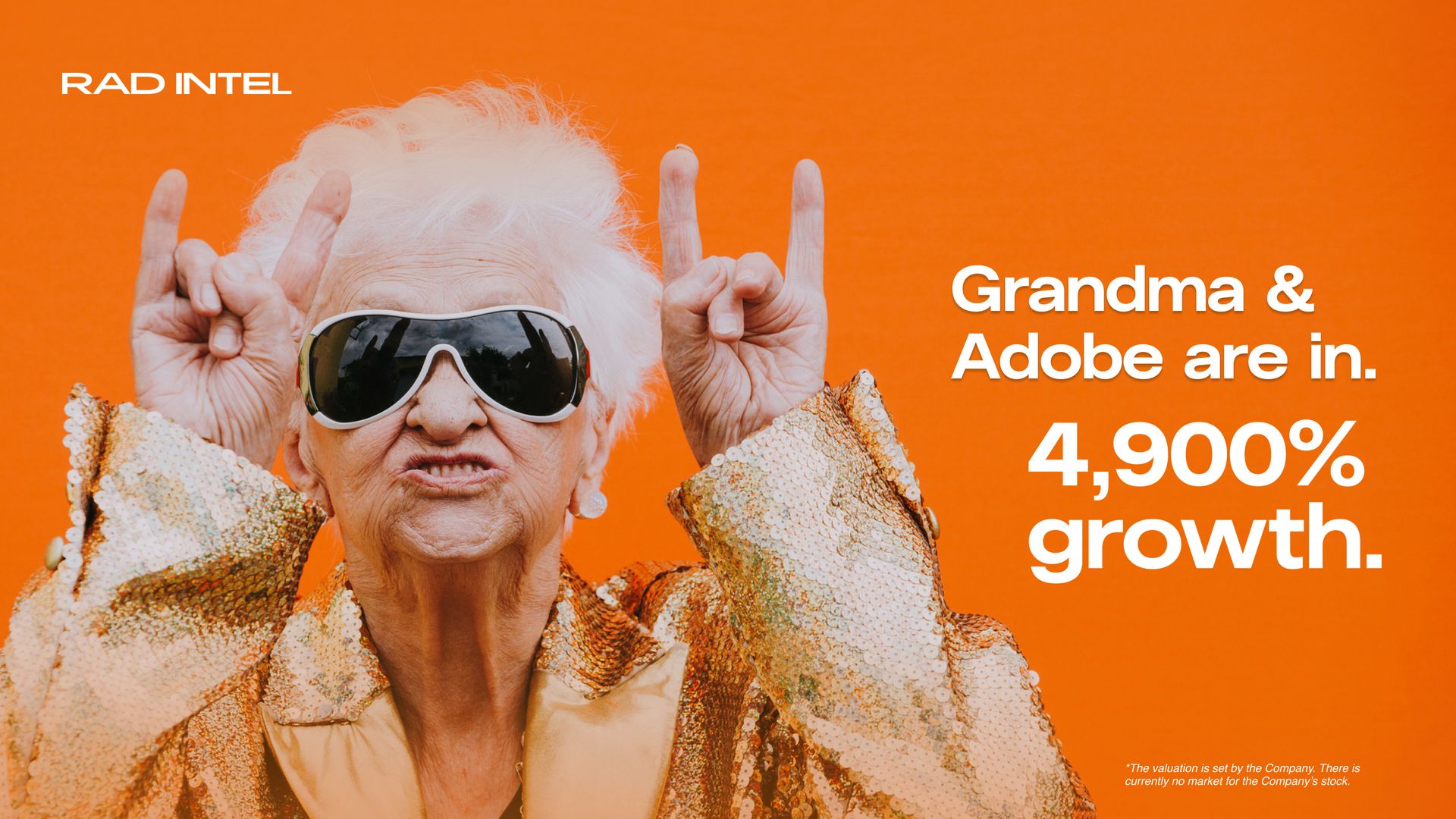- AI Business Insights
- Posts
- Ex-Googler’s 4-Step CORE Productivity System
Ex-Googler’s 4-Step CORE Productivity System
Forget Less, Finish More
I’ve always struggled with those brilliant ideas that pop into my head at the worst times, only to completely vanish by the time I’m at my desk. It turns out our brains are for having ideas, not holding them.
I just stumbled upon a video from a productivity expert who spent nine years at Google teaching this exact principle to over 6,600 of his colleagues.
CTV ads made easy: Black Friday edition
As with any digital ad campaign, the important thing is to reach streaming audiences who will convert. Roku’s self-service Ads Manager stands ready with powerful segmentation and targeting — plus creative upscaling tools that transform existing assets into CTV-ready video ads. Bonus: we’re gifting you $5K in ad credits when you spend your first $5K on Roku Ads Manager. Just sign up and use code GET5K. Terms apply.
*Ad
This innovator developed a system called the CORE workflow, and I was blown away by its simplicity and power. It’s a framework designed to handle the four main types of information we deal with at work, including Tasks, Ideas, Notes, and Media (files), so that literally nothing ever slips through the cracks again.
The Key Idea: A System for Everything
The entire philosophy is built on the fact that relying on motivation or willpower is a losing game. As the creator points out, we don’t rise to the level of our goals; we fall to the level of our systems. The CORE workflow isn’t about adding more work. It’s about redirecting the mental energy you’re already wasting trying to remember everything into a reliable process that works even on your worst days.
The system is broken down into four simple, logical steps: Capture, Organize, Review, and Engage. What makes this so effective is that it creates a closed loop, taking an idea from a fleeting thought all the way to a completed action without you having to stress about forgetting it.
Deeper Dive: The Four Pillars of CORE
After watching the creator’s breakdown, I’ve pulled out the most important insights. Here’s a deeper look at how it all comes together.
Pillar 1: The CORE Workflow in Action
The magic is in the sequence. Each step flows into the next, creating a foolproof assembly line for your thoughts and to-dos.
Capture: The first rule is to get information out of your head and into an external system immediately. The mind behind it gave a great example: his VP asks for slides while he’s at lunch without his laptop. He pulls out his phone, opens a task app, and jots it down: “Schedule time for Japan market data.” It takes ten seconds, and his brain is now free.
Organize: This step needs to be nearly frictionless. For the task he just captured, organizing was as simple as adding a due date of “today.” For an idea, he might add a simple tag like “#thoughts” in a notes app. The goal isn’t complex folder structures; it’s about adding just enough context so the item can be processed later.
Review: This is the step most people skip, and it’s why other systems fail. The creator schedules three 30-minute “review sessions” into his calendar every day (morning, post-lunch, end of day). During this protected time, he processes his inboxes. That task to “schedule time” gets converted into a two-hour block on his calendar. An idea about a pay raise negotiation gets turned into a calendar event to prepare and an agenda item for his next 1-on-1.
Engage: This is simply about doing the work. Because you’ve already scheduled the time during your review step, there’s no decision to make. When the calendar block arrives, you just execute. That fleeting request from a VP is now a completed slide deck, and it all happened systematically.
Pillar 2: The Philosophy Is the Foundation
Understanding why this works is what makes it stick. The person who shared it emphasizes that this isn’t just another productivity hack; it’s a fundamental shift in how you operate. He explains that the initial discomfort of adopting a new routine is always less than the chronic stress of feeling disorganized and not making progress on your goals.
By creating a system, you are building a safety net for your future self: the one who is tired, unmotivated, and doesn’t feel like working. The system does the heavy lifting for you, ensuring that you follow through on commitments regardless of how you feel in the moment.
Go from AI overwhelmed to AI savvy professional
AI will eliminate 300 million jobs in the next 5 years.
Yours doesn't have to be one of them.
Here's how to future-proof your career:
Join the Superhuman AI newsletter - read by 1M+ professionals
Learn AI skills in 3 mins a day
Become the AI expert on your team
*Ad
Other awesome AI guides you may enjoy

Pillar 3: It Works With Any Tool
I think this is the most brilliant part. So many people get stuck wondering if they should use Notion, Todoist, Obsidian, or Apple Notes. The post’s author makes it incredibly clear: the tools do not matter. The workflow is platform-agnostic. You can capture a task in the Microsoft To Do app, review it later, and block time in Google Calendar. You can capture an idea in a physical notebook, review it that evening, and add it to your project plan in Asana. The principles remain the same:
Capture Quickly: Use whatever is fastest for you.
Organize Clearly: Add a due date, a tag, or move it to a specific list.
Review Frequently: Schedule and protect this time on your calendar.
Engage Effectively: Do the work during the time you’ve allocated.
This approach frees you from endlessly searching for the “perfect app” and empowers you to build a powerful system with the tools you already know and use.
This is one of the most practical and realistic productivity systems I’ve come across. The expert promises that it becomes second nature after just two weeks of practice.
Check out the full video from this talented creator to see detailed examples and a step-by-step walkthrough of how he applies it using Google Workspace tools.
$1K Could’ve Made $2.5M
In 1999, $1K in Nvidia’s IPO would be worth $2.5M today. Now another early-stage AI tech startup is breaking through—and it’s still early.
RAD Intel’s award-winning AI platform helps Fortune 1000 brands predict ad performance before they spend.
The company’s valuation has surged 4900% in four years* with over $50M raised.
Already trusted by a who’s-who roster of Fortune 1000 brands and leading global agencies. Recurring seven-figure partnerships in place and their Nasdaq ticker is reserved: $RADI.
Now open at $0.81/share, allocations limited – price moves on 11/20.
This is a paid advertisement for RAD Intel made pursuant to Regulation A+ offering and involves risk, including the possible loss of principal. The valuation is set by the Company and there is currently no public market for the Company's Common Stock. Nasdaq ticker “RADI” has been reserved by RAD Intel and any potential listing is subject to future regulatory approval and market conditions. Investor references reflect factual individual or institutional participation and do not imply endorsement or sponsorship by the referenced companies. Please read the offering circular and related risks at invest.radintel.ai.



